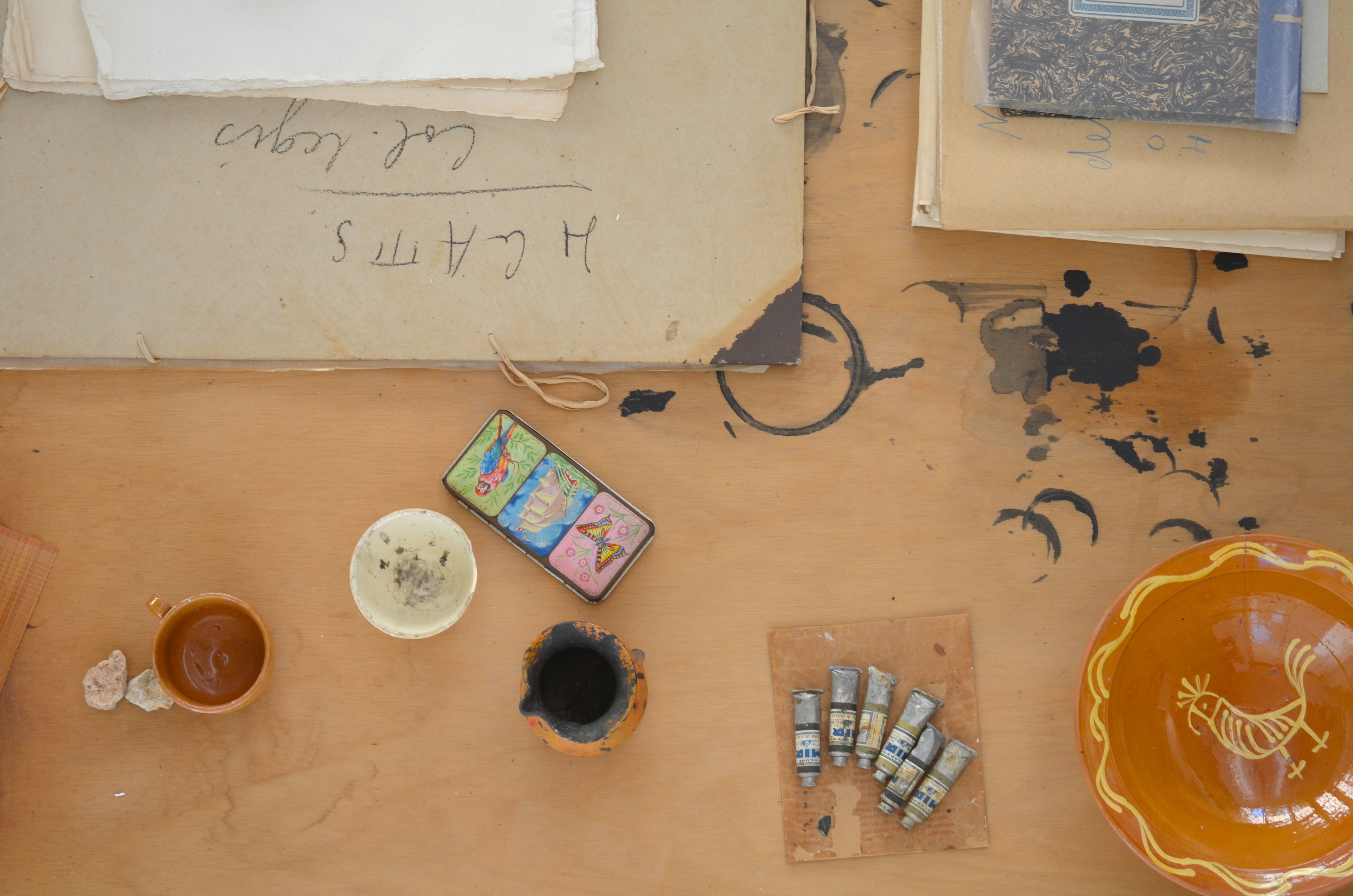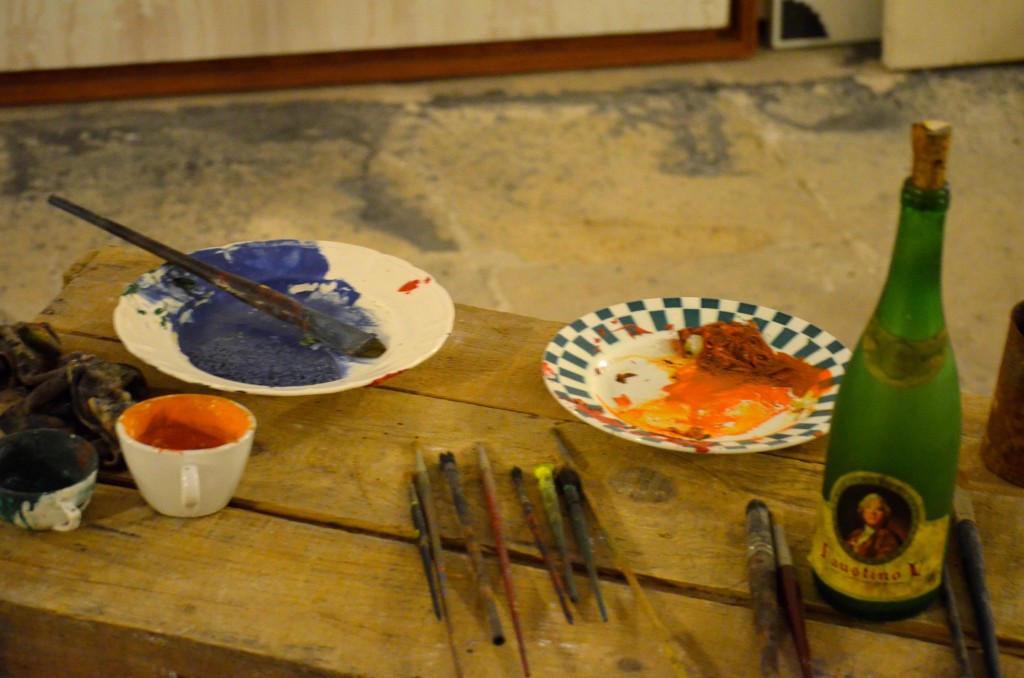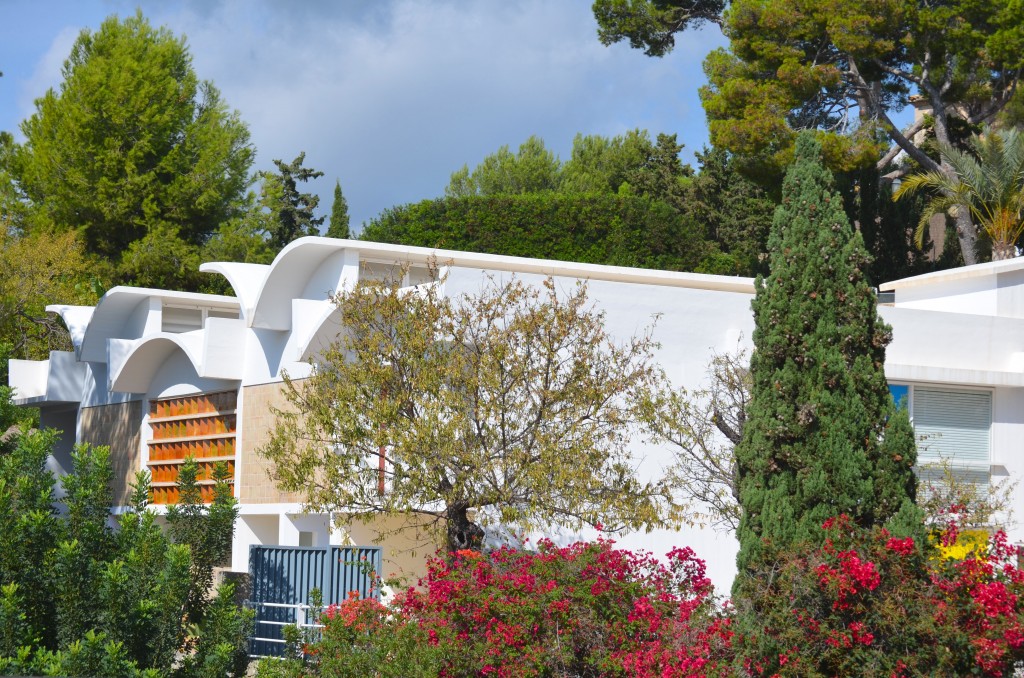Finding Miró: Fundació Pilar i Miró

Join special projects intern Gabriela Ayala every Friday as she travels in Miró’s footsteps through Europe.
Palma de Mallorca, Spain
I find myself twenty minutes from the city center, on a hill, with a gifted view of the water, boats, and buildings. I have an appointment to meet with a conservator here at the foundation. I know that between me and this black barred gate is where Miró lived and worked from 1956 until his death in 1983. I am greeted with a Spanish hello and taken down to the basement level of the Foundation. I am more than pleasantly surprised. The conservator has picked actual drawings out of their archives for me to look through with care. I have Miró in my hands, the real deal. These papers were the launching to bringing into existence his colorful paintings, prints, and sculptures. Again, I see that when Miró had an idea there was not enough time to find a sketchbook. Drawings and thoughts were jotted down on anything and everything. It is important to note that Miró was purposeful. Everything was well thought out and with reason. His pieces may appear spontaneous but in reality he was eccentrically detail oriented. An observant man who was aware of himself, of life, and the many details life has to offer us when we are willing to see.
As if this is not enough, I know Miró’s studio comes next. I have already seen photos of this and even in just black and white I could see that it was amazing. Again, a building designed by friend Josep Lluís Sert, wing-like shapes line the roof giving it an incredibly modern look. The highly textured wooden doors that seem more a part of an Old Spanish home, quickly and beautifully counteract the modernity. The structure is white and all the doors and shutters to the windows are different colors. This building could not scream Miró any louder. The brass handle is opened and I walk into any artist’s dream come true. The studio is large and spacious with natural light coming in from all directions. Tall walls and large windows showing the surrounding nature make the room feel even larger and connected to the outside world. The studio is kept in a way that is genuine to how Miró had it while working. Any inspirational items, clippings, or photos are pinned to the walls. There is an open top floor that gave Miró the ability to get a bird’s eye view on what he was working on. He mostly painted downstairs and drew up stairs. His supplies are still scattered on tables around the studio and a familiar whicker rocking chair sits still in the center of everything. There is still action and movement in the studio in the splatters of paint and footprints left on the floor. It is, simply put, beautiful.
I ask where Miró did his printmaking and sculptures; I am informed I have not seen it all. We follow a curved gravel path with trees and flowers leading us. Up a small ways there is a large white house that was once a farmhouse from the 18th century. It is a very typical Mallorcan country home from the time and is kept in these same conditions on the interior as well. Small shutters cover the windows to the home and two large wooden doors decorate the façade. Just behind these doors is a glass door that senses us and automatically opens. Obviously this is a contemporary addition to the home. This simple floor plan has a square center space and four rooms that connect to it. I step into the entryway with walls that look like one large sketchbook. There are drawings directly on the walls, paint on the stone floors, and Miró’s presence splattered around every corner. There is a print studio on the bottom level and all sorts of molds used by Miró scattered about the house. I am then taken upstairs to an area that is not usually seen by the public and witness the remnants from the last months of Miró’s life. This was another space for painting but the remarkable part is to see how many prepared canvases Miró had in these rooms. He had some big plans. Miró worked literally until his dying day. Lastly, I am taken to the one room where no art materials abide. This was a room merely for Miró to sit and relax. It shows his personality in a very different way than anything else I had seen at this point. There is a small round table off to the right with a chair and a couple of collected items on a shelf. This room of dark red walls has four portraits that inhabit its space: one each of his mother, his father, Pablo Picasso, and Joan Prats. Two narrow wooden doors lead to a large terrace where again that gifted view presents itself. I now can fully understand why Miró chose to move from the bustle of Barcelona to the peace of Palma.
Top image: Detail of a workspace in Miró’s studio. Photographer: Gabriela Ayala. www.gabrielaayala.com

